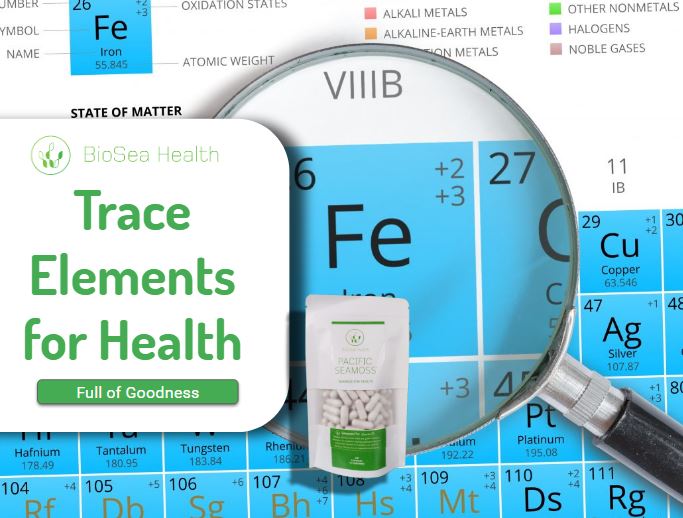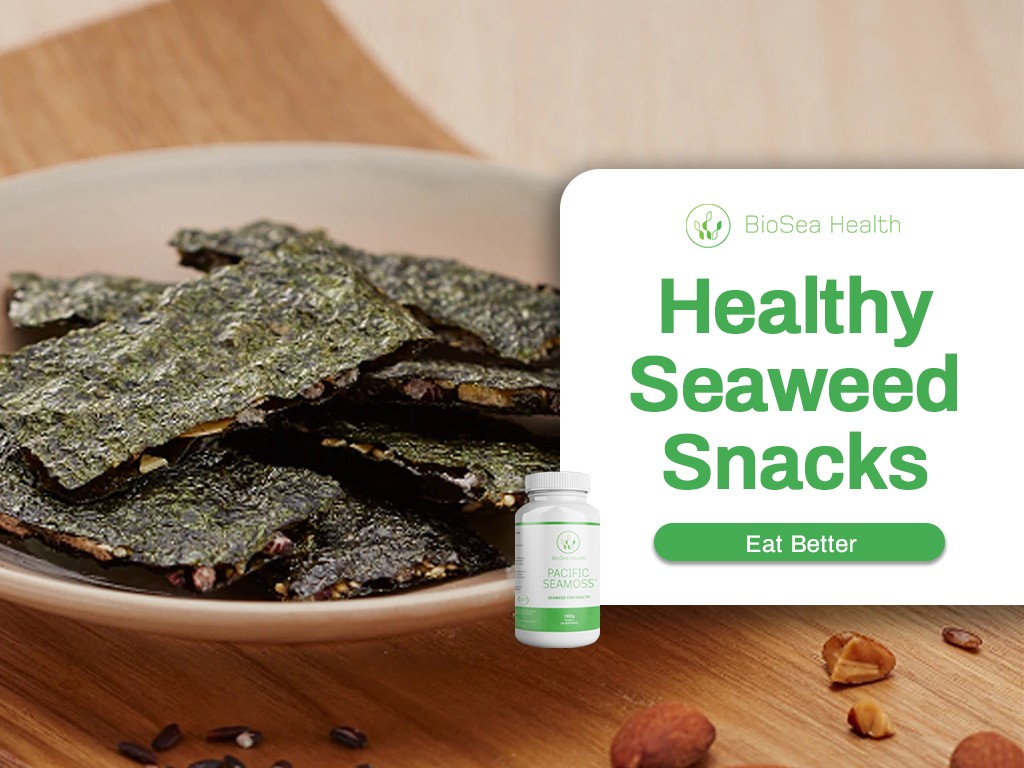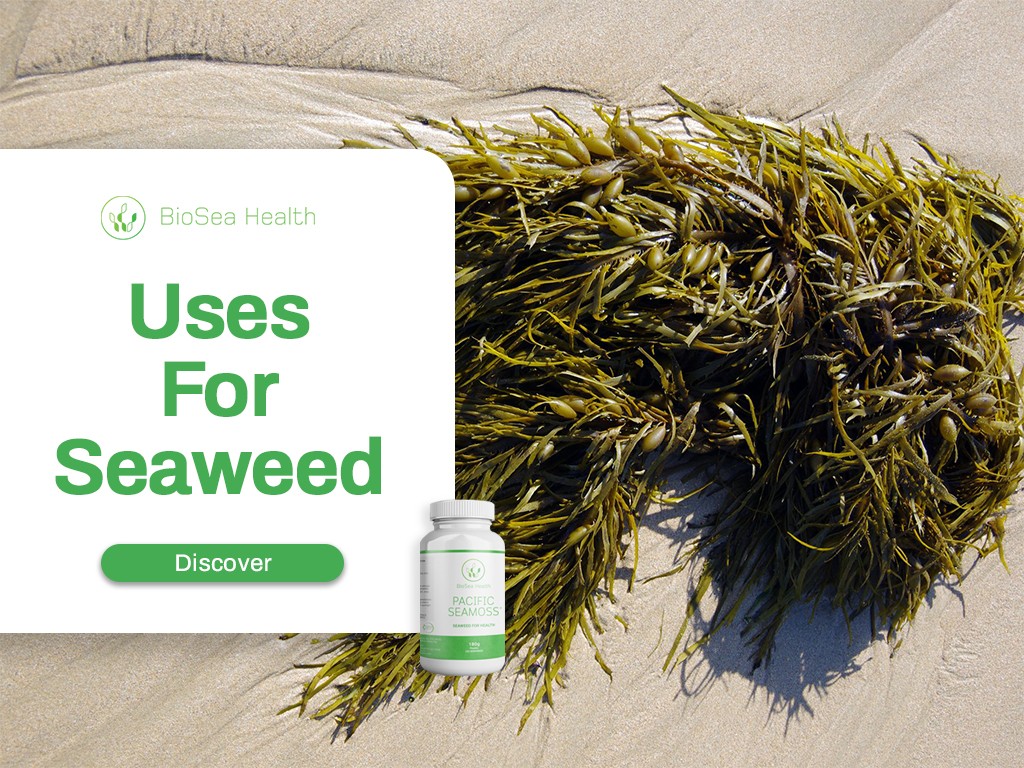Introduction
Trace elements in seaweed and even macro nutrient analysis of seaweed Kappaphycus alvarezii used in Pacific Seamoss is not published or standardized in the USDA data. This review of data from researchers confirms seaweed is very nutritious and can provide hard to get nutrients in an easy form. We publish this in a form to be used in nutrition of seaweed.
Various sources of information are conflicting as the seaweed has been grown in different areas and authors seldom measured what we know is important in seaweed nutrition including the water quality, the age of the seaweed, the phenotype, and how it treated and stored post harvest. The various authors include:
- Wanyoni in 20171 with seaweed from the Yasawa Islands, Fiji
- Rajasculochana 2,3 from Tamil Nadu in India in 2010 and 2013 has differing levels in different papers.
- Keyimu Abdullah 2016 4 used Malaysian seaweed from Langkawi and Sabah
- Seasonal variations in nutrients were identified by Kumar 5 who collected in Gujarat in NorthWest India
- Abriami in 2011 reviewed nutrient and nutraceutical potential in Tamil Nadu, India 6
- Lumbessy 7 focused on amino acids from West Nusa Tenggara Indonesia
- Fayaz 2005 8 measured some vitamins in India
What are RDI, EAR and %DI Values
There are 3 different measures for how much to eat or how much is safe.
The Estimated Average Requirement (EAR) is used to examine the probability that usual intake is inadequate. It is used to estimate the prevalence of inadequate intakes within a group. The Recommended Dietary Intake (RDI) is used when usual intake at or above this level has a low probability of inadequacy. It is higher than the EAR sometimes as it is the daily intake level of a nutrient considered to be sufficient to meet the requirements of 97–98% of healthy individuals in every demographic in the United States.
The RDI values are taken from a range of sources 8 (AU / NZ standards here)
Recently, the labeling regulations in the USA has changed to % Daily Value (%DV) and is the percentage of the Daily Value for each nutrient in a serving of the food. The Daily Values are reference amounts (expressed in grams, milligrams, or micrograms) of nutrients to consume or not to exceed each day.
For chemicals to be mimimised, the acceptable daily intake (ADI) used and is defined as the maximum amount of a chemical that can be ingested daily over a lifetime with no appreciable health risk, and is based on the highest intake that does not give rise to observable adverse effects.
Amino Acid Requirements
Only the essential amino acids have requirements. The numbers are from Recommended Dietary Allowances: 10th Edition. National Research Council (US) Subcommittee on the Tenth Edition of the Recommended Dietary Allowances. Washington (DC): National Academies Press (US); 1989. They are based on the mg per kg of weight. 9
Upper Limits
Upper limits are set for some minerals such as nickel. 10.
Trace Elements Nutrient Levels of Pacific Sea Moss
| Name of Element | Symbol | Per Serve | Per 100g | RDI or %DV | Daily Serve ( % RDI) |
|---|---|---|---|---|---|
| Aluminium | Al | 0.3mg | 0.3mg | 30.0mg | 0.90% |
| Arsenic | Ar | 0.0mg | 0.0mg | 1.0mg | 1.07% |
| Boron | B | 0.3mg | 0.3mg | 30.0mg | 0.98% |
| Barium | Ba | 0.0mg | 0.0mg | 1.0mg | 0.32% |
| Bromine | Br | 3.0mg | 3.0mg | 100.0mg | 3.00% |
| Calcium | Ca | 22.4mg | 22.4mg | 600.0mg | 3.74% |
| Cadmium | Cd | 0.0mg | 0.0mg | 0.0mg | 5.75% |
| Carbon | C | 371.3mg | 371.3mg | 0.0mg | |
| Chlorine | Cl | 585.8mg | 585.8mg | 10000.0mg | 5.86% |
| Cobalt | Co | 0.0mg | 0.0mg | 0.0mg | 26.67% |
| Chromium | Cr | 0.1ug | 0.1ug | 25.0ug | 0.25% |
| Copper | Cu | 0.0mg | 0.0mg | 1.0mg | 0.48% |
| Fluorine | F | 0.0mg | 0.0mg | 2.0mg | 0.00% |
| Hydrogen | H | 0.0mg | 0.0mg | 0.0mg | n/a |
| Iodine | I | 23.6ug | 23.6ug | 150.0ug | 15.70% |
| Iron | Fe | 1.1mg | 1.1mg | 11.0mg | 9.65% |
| Lead | Pb | 0.0mg | 0.0mg | 0.0mg | 3.75% |
| Mercury | Hg | 0.0mg | 0.0mg | 0.0mg | 6.88% |
| Potassium | K | 500.0mg | 500.0mg | 3800.0mg | 13.16% |
| Magnesium | Mg | 14.2mg | 14.2mg | 320.0mg | 4.45% |
| Manganese | Mn | 0.0mg | 0.0mg | 5.5mg | 0.21% |
| Molybdenum | Mo | 0.3ug | 0.3ug | 45.0ug | 0.56% |
| Oxygen | O | 500.0mg | 500.0mg | 20000.0mg | 2.50% |
| Phosphorus | P | 0.8mg | 0.8mg | 700.0mg | 0.11% |
| Sodium | Na | 94.2mg | 94.2mg | 2000.0mg | 4.71% |
| Nickel | Ni | 19.6ug | 19.6ug | 1000.0ug | 1.96% |
| Nitrogen | N | 1302.0 | 1302.0 | na | na |
| Selenium | Se | 2.5ug | 2.5ug | 60.0ug | 4.17% |
| Strontium | Sr | 0.4mg | 0.4mg | 1.5mg | 24.58% |
| Sulphur | S | 77.8mg | 77.8mg | 980.0mg | 7.93% |
| Vanadium | V | 0.0mg | 0.0mg | 1.8mg | 0.57% |
| Zinc | Zn | 0.3mg | 0.3mg | 7.0mg | 3.70% |
Good Nutrition. Good Outcomes
Customers tell us about how good they feel from eating seaweed. Hair growth. Nail growth.
References
[1] Wanyonyi S, du Preez R, Brown L, Paul NA, Panchal SK. Kappaphycus alvarezii as a Food Supplement Prevents Diet-Induced Metabolic Syndrome in Rats. Supplementary Data. Nutrients. 2017;9(11):2. doi:10.3390/nu9111261
[2] Rajasulochana P, Krishnamoorthy P, Dhamotharan R. Amino acids, fatty acids and minerals in Kappaphycus sp. 2010;5(5):12.Rajasulochana P, Krishnamoorthy P. An investigation on the neutraceutical aspects of the Kappaphycus alvarezii. Int J Pharm Res. 2013;5:25-33.
[3] Keyimu X, Abdullah A. Determination of Element Compositions and Antioxidant Activities of Kappaphycus alvarezii Found in the Waters of Langkawi and Sabah, Malaysia. Int J ChemTech Res. Published online 2016:6.
[4] Kumar KS, Ganesan K, Subba Rao PV, Thakur MC. Seasonal studies on field cultivation of Kappaphycus alvarezii (Doty) Doty on the northwest coast of India. J Appl Phycol. 2016;28(2):1193–1205. doi:10.1007/s10811-015-0629-y
[5]Abirami RG, Kowsalya S. Nutrient and Nutraceutical Potentials of Seaweed Biomass Ulva lactuca and Kappaphycus alvarezii. :8.
[6] Lumbessy SY, Andayani S, Nursyam H, Firdaus M. Biochemical study of amino acid profile of Kappaphycus alvarezii and Gracilaria salicornia seaweeds from Gerupuk Waters, West Nusa Tenggara (NTB). EurAsian J Biosci. Published online 2019:5.
[7] Chemical Composition, Iron Bioavailability, and Antioxidant Activity of Kappaphycus alvarezzi (Doty) | Journal of Agricultural and Food Chemistry. Accessed October 26, 2020. https://pubs.acs.org/doi/10.1021/jf0493627
[8] Allowances NRC (US) S on the TE of the RD. Protein and Amino Acids. National Academies Press (US); 1989. Accessed October 26, 2020. https://www.ncbi.nlm.nih.gov/books/NBK234922/
[9] Nutrient Reference Values for Australia and New Zealand Including Recommended Dietary Intakes. :320.
[10] Institute of Medicine (US) Panel on Micronutrients. Dietary Reference Intakes for Vitamin A, Vitamin K, Arsenic, Boron, Chromium, Copper, Iodine, Iron, Manganese, Molybdenum, Nickel, Silicon, Vanadium, and Zinc. Washington (DC): National Academies Press (US); 2001. 13, Arsenic, Boron, Nickel, Silicon, and Vanadium. Available from: https://www.ncbi.nlm.nih.gov/books/NBK222322/















